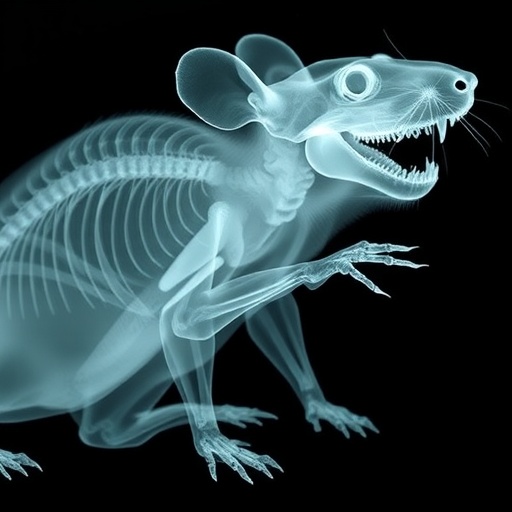In a groundbreaking study published in the journal “Discover Animals,” researchers have unveiled a fascinating insight into the dental health of indigenous South African rodents. Entitled “Radiographic screening of indigenous South African rodent incisor teeth for the presence of elodontomas,” this study sheds light on the prevalence and characteristics of elodontomas—benign dental tumors that can affect the incisor teeth of rodents. The implications of this research could extend beyond understanding rodent health; it may provide clues about the broader ecological balance within these environments.
The research conducted by Norval, Tordiffe, and Steenkamp utilized advanced radiographic techniques to examine the incisor teeth of various rodent species native to South Africa. Elodontomas, while benign, can lead to significant health issues in rodents, including pain and difficulty in feeding. This new study employs modern imaging technologies that allow for less invasive examination of these mammals, setting a precedent for future studies on wildlife dental health.
Rodents play an essential role in ecological systems, serving as prey for larger animals, dispersers of seeds, and contributors to soil aeration. Understanding the prevalence of elodontomas in these species not only aids in identifying health issues but also offers an insight into the potential impacts on the ecosystem. The researchers focused on capturing a comprehensive representation of indigenous rodents, ensuring that the findings would be relevant across various habitats.
The methodology employed in this study is particularly noteworthy. Traditional methods of examining rodent teeth often involved sacrificing the animals, which raised ethical concerns among researchers and conservationists alike. By utilizing radiographic screening, the team demonstrated a significant shift towards more humane practices in wildlife research, allowing for the assessment of dental health without harming the subjects. This advancement highlights the importance of evolving research techniques in order to promote ethical standards in wildlife studies.
Within the scope of the research, the authors reported on the encounter and identification of elodontomas in several rodent species. The findings indicate a prevalence of these tumors among the examined populations, and the data suggest potential links between environmental factors and the occurrence of elodontomas. Notably, the presence of elodontomas could potentially signal underlying health problems, influenced by dietary or environmental stressors.
Furthermore, the study underscores the potential ramifications for conservation efforts. By identifying dental health issues within rodent populations, scientists can better assess the overall health of these animal communities, which are often indicators of environmental quality. Healthy rodent populations contribute to balanced ecosystems, while compromised groups can lead to broader ecological disturbances. Conservationists may thus use this data to inform strategies aimed at protecting not just the rodents but the habitats they occupy.
Another crucial aspect highlighted by the research is the genetic diversity of the rodent populations in South Africa. The authors suggest that elodontomas may be influenced by genetic factors, as well as by the animals’ diets. This observation opens up new avenues for investigation, prompting researchers to delve deeper into how genetics and environment intersect to influence health outcomes in these small mammals.
In their findings, the authors provided a comprehensive discussion on the types of elodontomas discovered, ranging from small benign growths to more complex formations that could have significant implications for the rodents’ quality of life. The detailed descriptions of these findings contribute to the existing literature on rodent pathology and offer a foundation for future studies that might look at treatment options or further preventive measures.
Moreover, the implications of this study extend beyond the immediate health of the rodents. The research serves as a bellwether for wildlife health across the globe, highlighting the need for ongoing monitoring of animal health in correlation with environmental changes. As habitats continue to shift in response to human activities and climate change, understanding the health of rodent populations can provide valuable indicators for the broader impacts of these changes on wildlife ecosystems.
The study positions itself at the forefront of veterinary dentistry in wildlife research, merging principles of animal health, conservation science, and ethical research practices. The authors advocate for increased awareness of health issues in wildlife populations, urging the scientific community to adopt similar methodologies in other species to uncover hidden public health and conservation concerns.
As the research continues to garner attention, it might inspire awareness campaigns and educational outreach that focus on the significance of rodent populations in ecological health. This can foster community interest in protecting these vital species and encourage local conservation initiatives. By disseminating the findings widely, the researchers hope to engage a broader audience in conservation discussions, underscoring the interconnectedness between human actions and wildlife well-being.
In conclusion, Norval, Tordiffe, and Steenkamp’s groundbreaking research into the dental health of indigenous South African rodents is not just a revelation about elodontomas; it’s a call to action. The study highlights the value of enhanced research methods that prioritize both animal welfare and scientific integrity while offering insights that could pave the way for improved conservation strategies. As ecological challenges mount, understanding and addressing the health of all species becomes increasingly paramount in our efforts to maintain the intricate web of life that sustains us.
Subject of Research: Dental health of indigenous South African rodents.
Article Title: Radiographic screening of indigenous South African rodent incisor teeth for the presence of elodontomas.
Article References:
Norval, Q., Tordiffe, A. & Steenkamp, G. Radiographic screening of indigenous South African rodent incisor teeth for the presence of elodontomas.
Discov Anim 2, 27 (2025). https://doi.org/10.1007/s44338-025-00078-7
Image Credits: AI Generated
DOI:
Keywords: Rodent health, elodontomas, conservation, dental pathology, radiographic screening, wildlife research.




